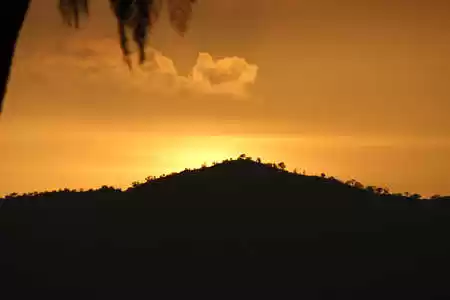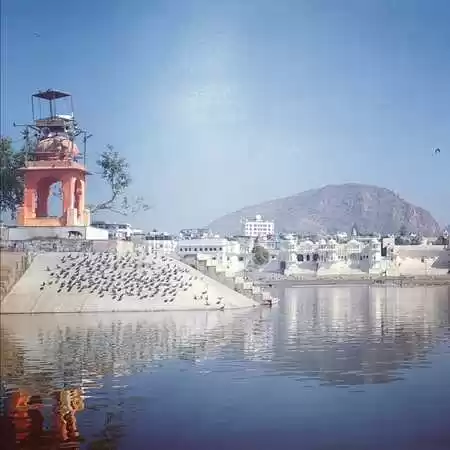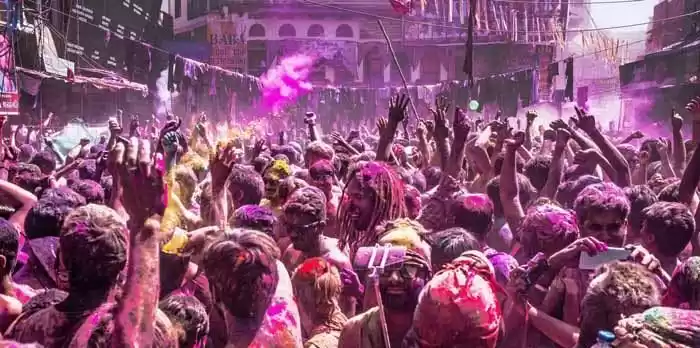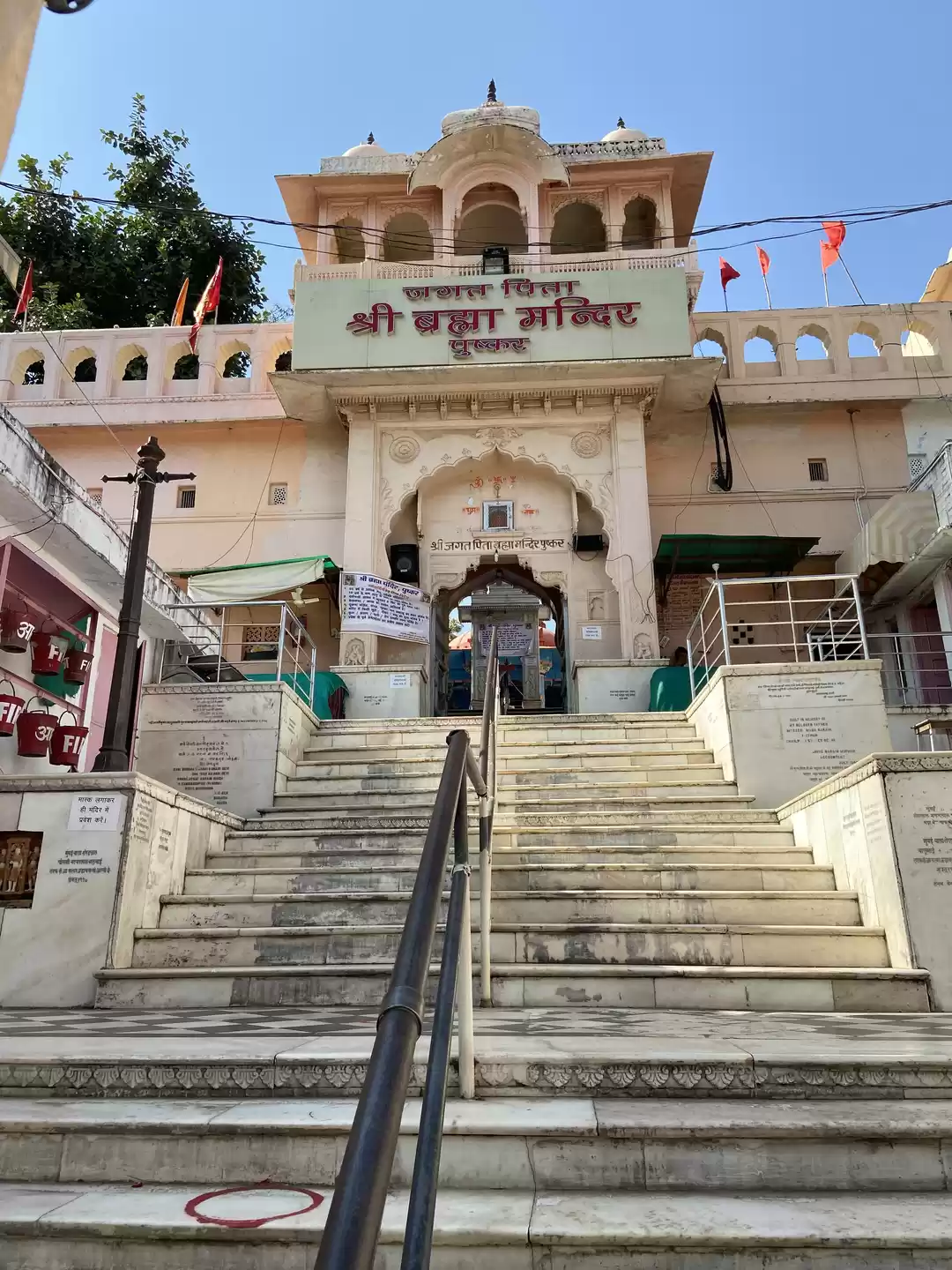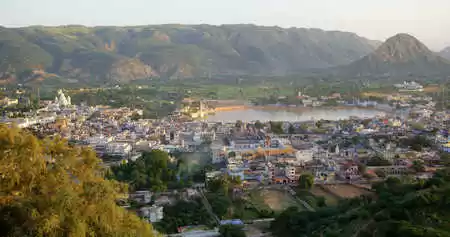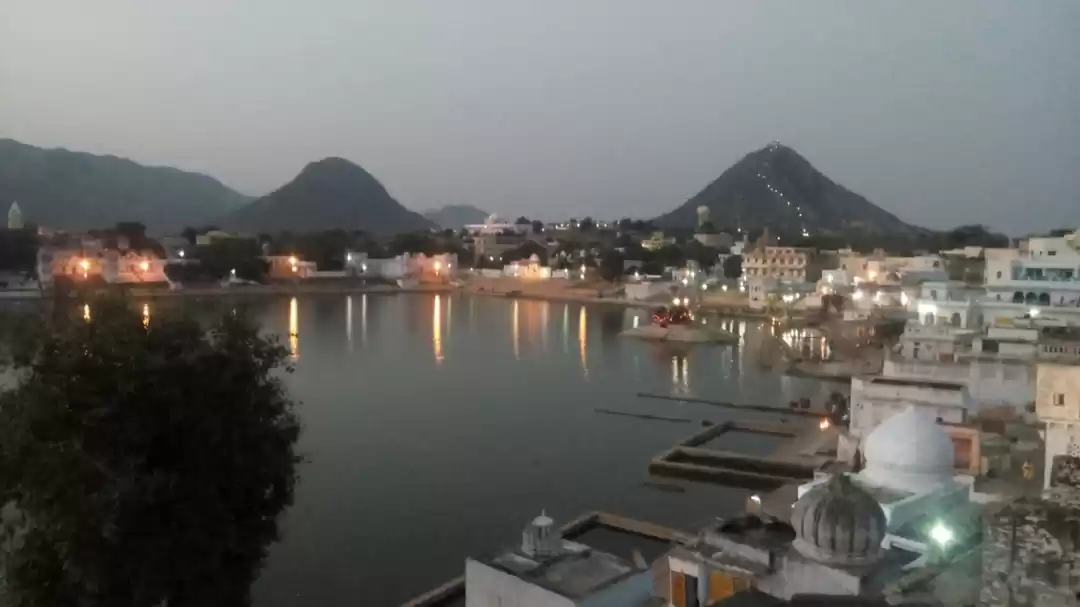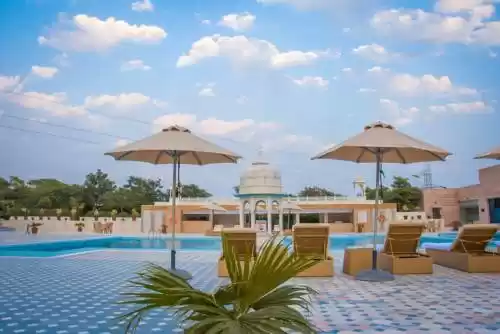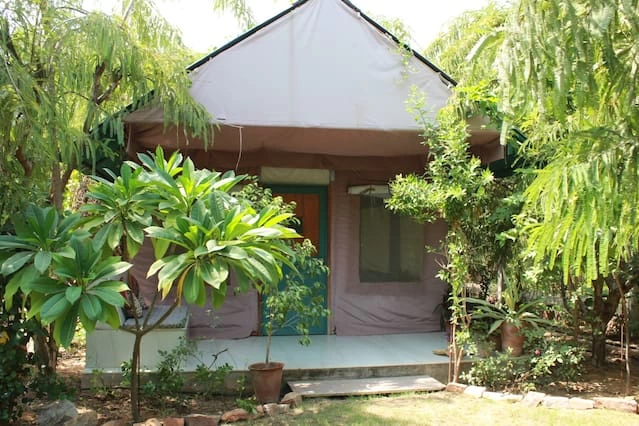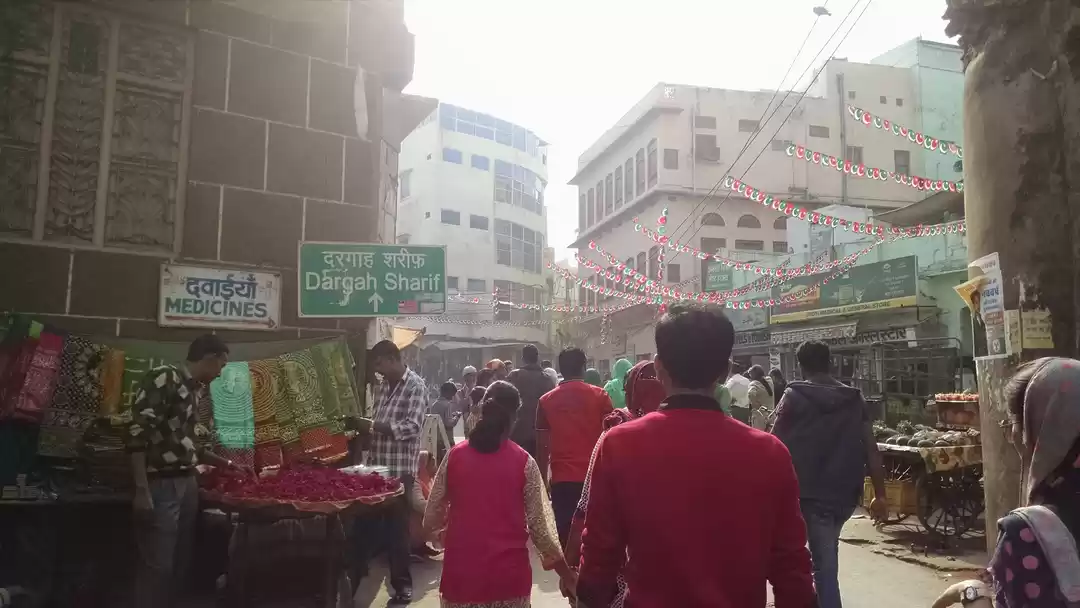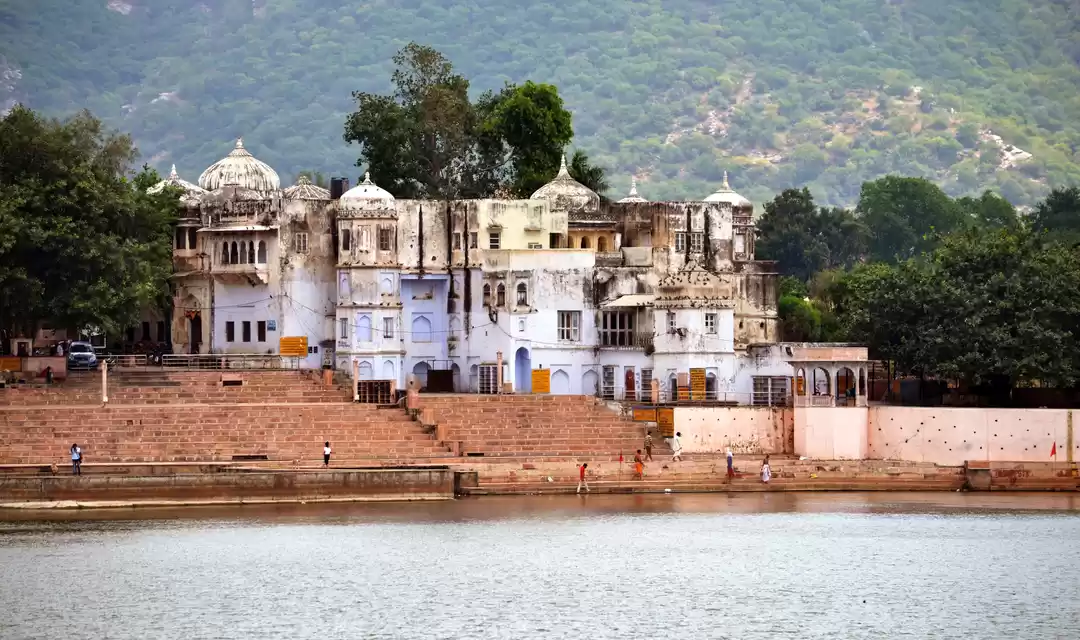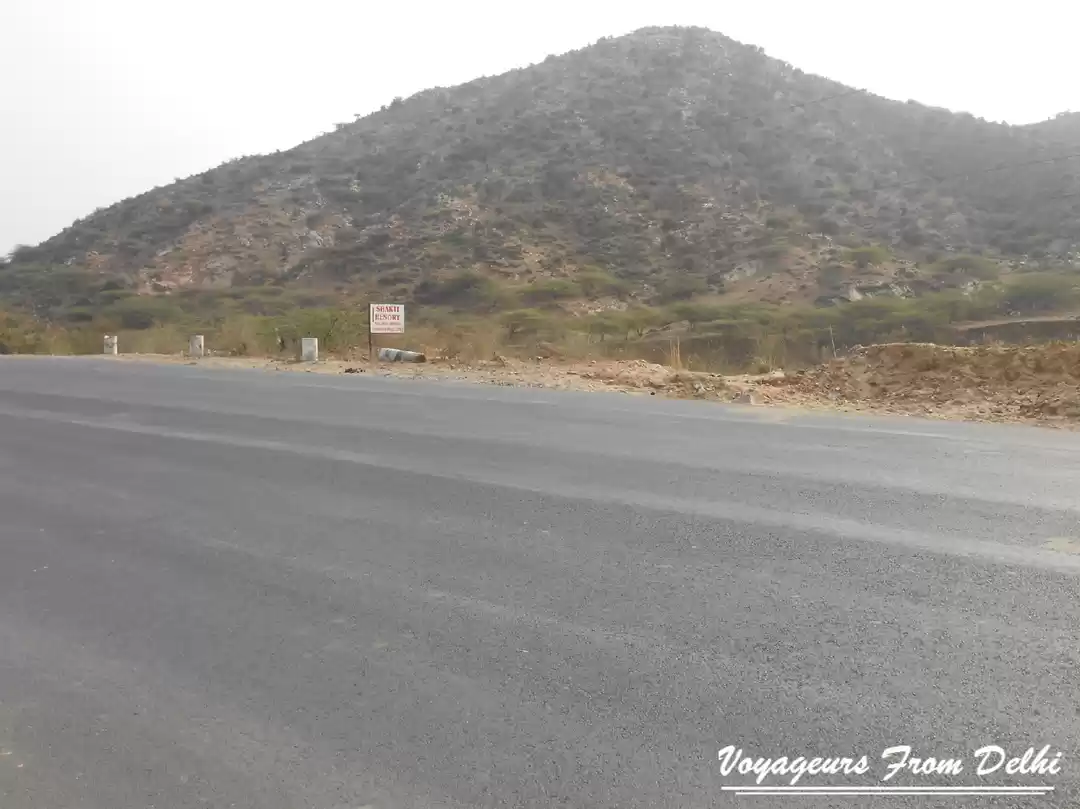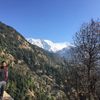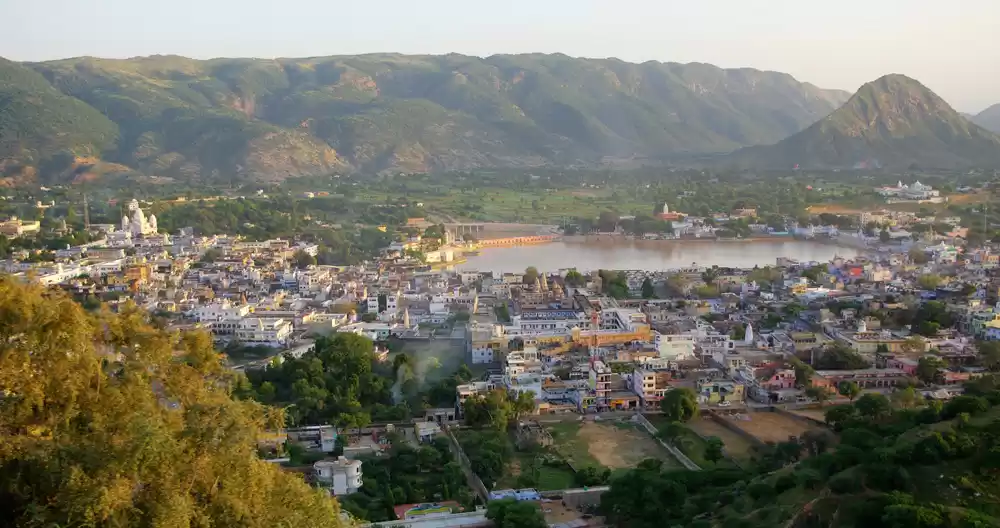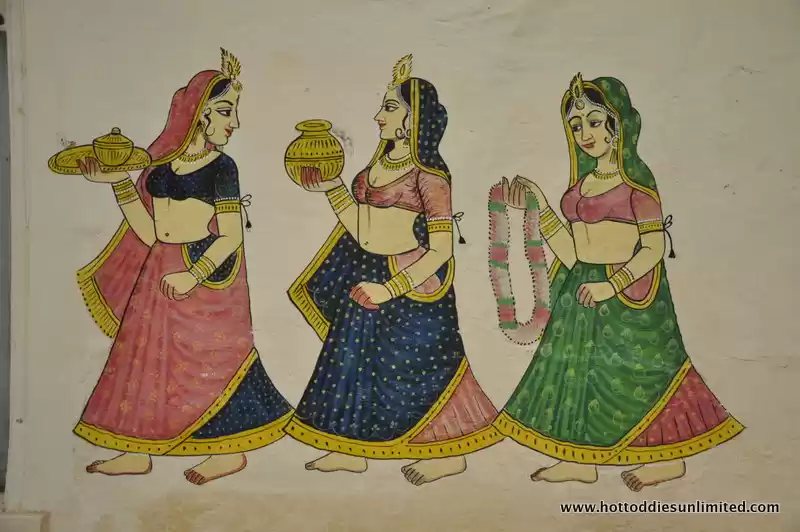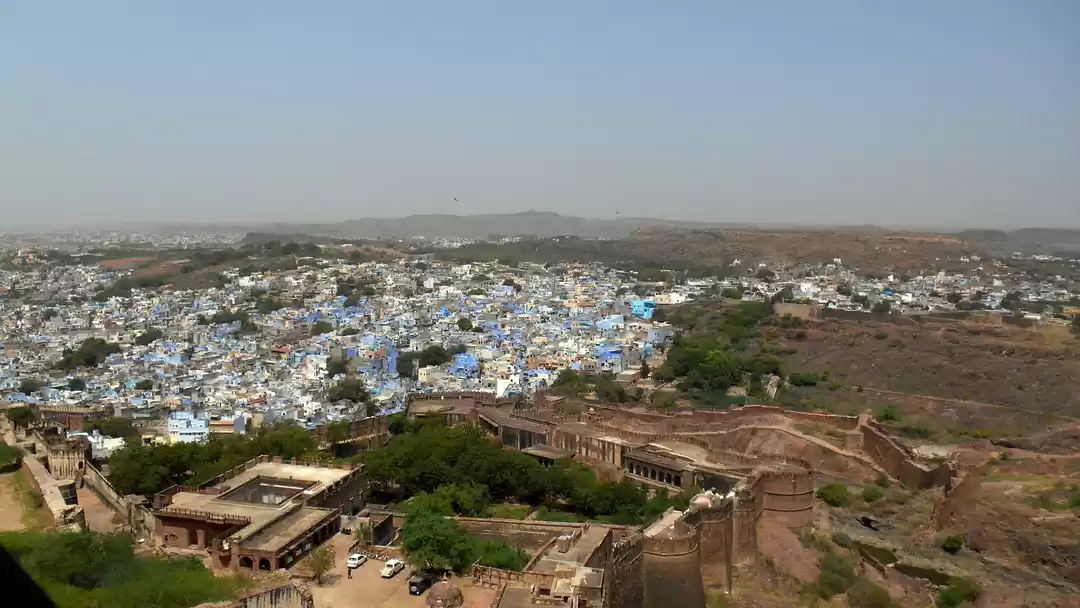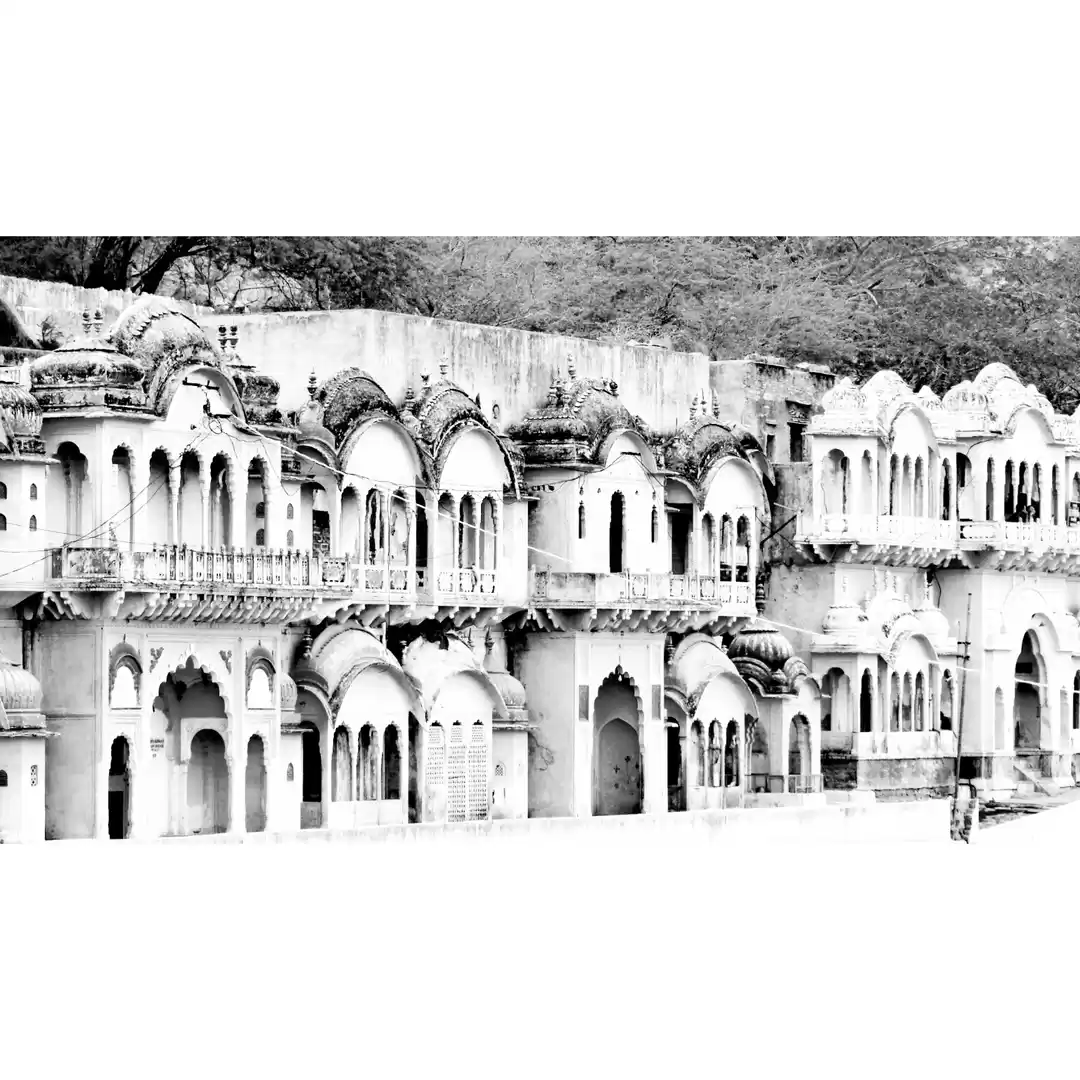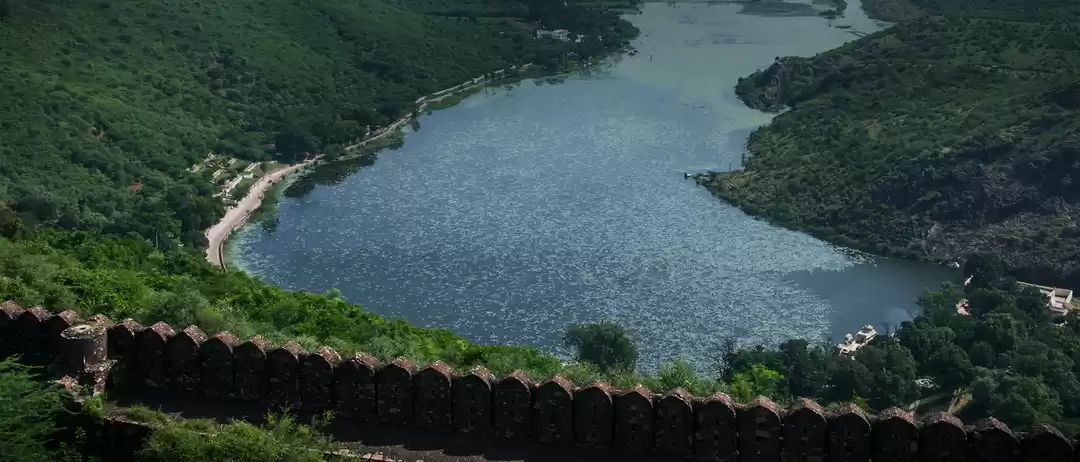Pushkar Tourism and Travel Guide
Pushkar (Hindi: पुष्कर) is a town in the Ajmer district in the Indian state of Rajasthan. It is situated 14 km (8.7 mi) northwest of Ajmer at an average elevation of 510 m (1,670 ft) and is one of the five sacred dhams (pilgrimage site) for devout Hindus. According to Hindu theology, the pond at the Katas Raj temple Near Choa Saidan Shah in Chakwal District of Pakistan has a theological association with Shiva; it was formed by the tears of Lord Shiva which he is believed to have shed after the death of his wife, Sati. The story goes that when Sati died, Shiva cried so much and for so long, that his tears created two holy ponds – one at Pushkara in Ajmer in India and the other at Ketaksha, which literally means raining eyes, in Sanskrit. It is from this name that the word Katas is derived. It is often called 'Tirth Raj' – the king of pilgrimage sites – and has in recent years become a popular destination for foreign tourists.Pushkar is one of the oldest existing cities of India. It lies on the shore of Pushkar Lake. The date of its actual origin is not known, but legend associates Brahma with its creation.Pushkar has many temples. Most of the temples are not very old because many temples were destroyed during Muslim conquests in the area. Subsequently, the destroyed temples were rebuilt. The most famous among all is the Brahma Temple built during the 14th century CE. Very few temples to Lord Brahma exist anywhere in the world. Other temples of Brahma include Bithoor in Uttar Pradesh, India; Khedbrahma in Gujarat, India; village Asotra near Balotra city of Barmer district in Rajasthan; Uttamar Kovil (one of the Divya Desams) near Srirangam, Tamil Nadu; Carambolim near Valpoi in Goa, Mother Temple of Besakih in Bali, Indonesia; and Prambanan in Yogyakarta, Indonesia. The Pushkar lake has 52 ghats where pilgrims descend to the lake to bathe in the sacred waters.Pushkar is also famous for its annual fair (Pushkar Camel Fair) held in November.
Tripoto Recommends
Top Attractions In Pushkar
Itineraries For Pushkar
Best Luxury Hotels In Pushkar
Best Hostels And Homestays In Pushkar
Travel Articles And Blogs For Pushkar
Trips and Itineraries for Pushkar
trip
Jaipur, Ajmer & Pushkar - Prayers at Dargah, Bhrahma Temple & Pushkar Lake - Part 2
Continuing from our road trip the next stop was Ajmer & later, Pushkar.Visit to Ajmer's Darga...
11.0k Views
pilgrimagenaturenaturetempletrip
The pious yet colorful Pushkar
After my visit to the holy Ajmer ki Dargah, I planned visit to the vibrant Pushkar. There are loc...
9.4k Views
IndiaRajasthanAjmerPushkar


